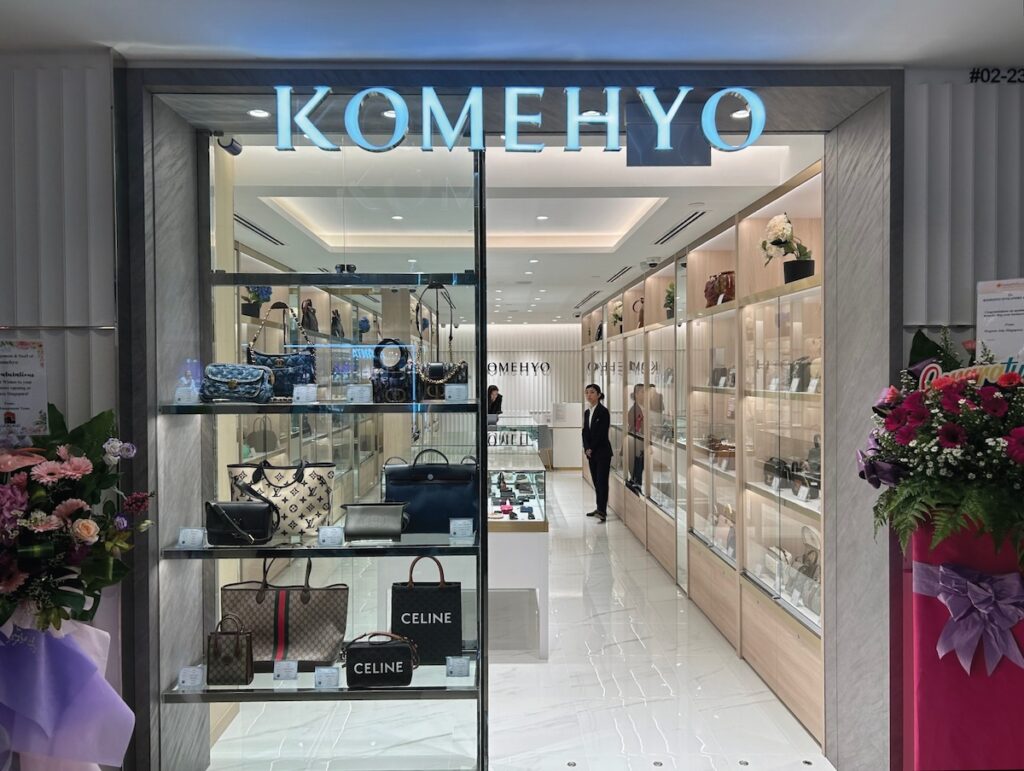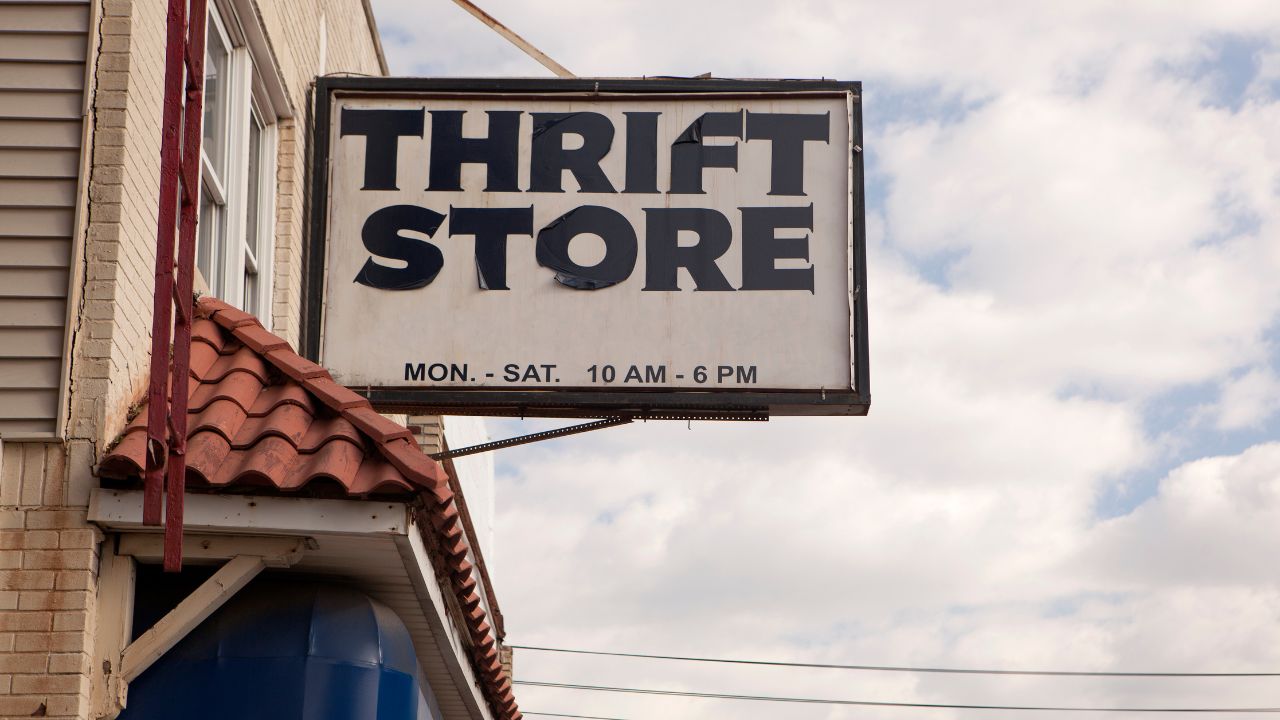Once the domain of the budget-conscious, thrifting in Singapore has blossomed into a vibrant cultural movement. For the modern Singaporean, thrifting is not just about saving money, it’s about making a statement. Sustainability, individuality, and an unique style and story.
Thrifting for a Cause. The foundation of Singapore’s thrift scene is built on social good. Many of the largest institutions are social enterprises, where every dollar spent directly fuels charitable work.
When you purchase a piece of furniture from The Salvation Army or a blouse from the SSVP Shop, your money isn’t just going to a retailer, it’s funding programs for the less fortunate. This adds a layer of purpose to the shopping experience, transforming a simple transaction into a meaningful act of community support.
1) A Tale of Two Worlds: The Evolution of Singapore’s Thrift Scene
The landscape of thrifting in Singapore is not a monolith. It has evolved into catering to two distinct types of shoppers and reflecting a broader cultural shift.
From Charity Shops to Curated Boutiques
For years, thrifting in Singapore was closely tied to shops run by charitable organizations, most notably, The Salvation Army. These large, warehouse-style spaces offered an eclectic mix of donated goods, where the thrill came from the hunt, digging through piles of items to uncover a hidden gem at a bargain price. This classic model still holds strong appeal, especially for those who enjoy the adventure and prioritize affordability.
In recent years, however, a new wave of thrift stores has taken root: the curated boutique. Often run by young entrepreneurs and located in stylish neighborhoods like Kampong Gelam, these shops offer a more refined experience.
Instead of endless racks to sift through, shoppers find carefully selected collections of vintage, reworked, and fashionable second-hand items. This modern approach caters to consumers who value sustainability and individuality, but prefer the convenience and aesthetic of a retail boutique over the unpredictability of a traditional thrift store.
The Price Disparity
While traditional charity shops might sell items for as little as $1 to $5, curated stores often have price points that rival new retail, with a reworked top fetching $65 or more. This has led to a debate about the very definition of “thrifting,” which originates from the word “thrifty.” Some purists argue that high-priced vintage boutiques have strayed from the movement’s accessible roots, while proponents see them as a vital bridge, diverting fashion-conscious consumers away from fast fashion.
Want to know which are the top thrift stores in Singapore? Read our ultimate guide to the best thrift stores in Singapore!

2) Strategies for a Successful Thrift Store Hunt
Thrifting is an art form. While luck plays a part, the most successful thrifters go in armed with a strategy. It’s an active, not passive, form of shopping that requires preparation, practical skills, and a touch of social grace. This playbook will equip you with everything you need to transform from a casual browser into a confident treasure hunter.
Before you hit the stores, a little preparation can make all the difference between an overwhelming experience and a triumphant one.
Preparation is Key
It’s wise to go in with a mental (or physical) list of items you’re looking for, such as “a good quality denim jacket” or “a floral midi dress.” This helps you focus and prevents you from getting lost in the sheer volume of clothes. However, the magic of thrifting lies in the unexpected, so remain open-minded. You might not find that specific jacket, but you could stumble upon a perfect vintage leather bag you never knew you needed.
The Thrifter’s Uniform
Comfort is crucial. Many smaller thrift shops have either very basic changing rooms (just a curtain and a mirror) or none at all. Wear a simple, fitted outfit—like leggings and a tank top—that you can easily slip clothes over to test the fit without having to fully undress.
Essential Toolkit: Always be prepared.
- A Large Reusable Bag: Many thrift stores, especially charity ones, have limited carriers or may charge for them. Bringing your own is sustainable and practical.
- Cash: While most larger stores accept cards or digital payments, many smaller, independent, or pop-up thrift stalls are cash-only. Having small notes on hand is always a good idea.
- A Measuring Tape: Vintage sizing is notoriously inconsistent and often runs smaller than modern sizing. Knowing your measurements (chest, waist, hips) and having a tape measure can save you from a purchase that doesn’t fit.
Store Etiquette: Thrifting is a community experience, and good etiquette goes a long way.
- Don’t Hoard: It’s tempting to grab an armful of maybes, but this prevents others from seeing the items. Only hold onto what you are seriously considering.
- Be Tidy: If you unfold an item, make the effort to fold it back. Don’t leave a mess in your wake for the staff or other shoppers to clean up.
- Negotiate Politely: In some stores, especially flea markets, prices may be negotiable. However, avoid “lowballing” with ridiculous offers. A polite “Is there a best price for this?” works wonders. Building a friendly rapport with sellers can often lead to better deals.

5) Is It Real? A Quick Guide On Authenticating Luxury Goods
When you’re hunting for second-hand luxury, the thrill of the find can be accompanied by the fear of the fake. While professional authentication is always best, here are some basics to help you spot the difference.
The Telltale Signs
- Materials: Authentic luxury goods are made from high-quality materials. Real leather feels soft, has a slight stretch, and has a distinct earthy smell. Fakes often use stiff, plastic-like leather that reeks of chemicals.
- Craftsmanship: Examine the stitching closely. On a genuine bag, it will be perfectly even, consistent, and without any frayed threads. Shoddy, uneven stitching is a major red flag.
- Hardware: Authentic hardware (zippers, clasps, studs) is substantial, heavy, and durable. It won’t chip, fade, or rust over time. Counterfeit hardware is often lightweight, flimsy, and may discolour quickly.
Codes & Certificates
Many designer bags have serial numbers or date codes. For example, Louis Vuitton uses a date code: a combination of letters and numbers indicating where and when it was made—stamped on an interior tag. Chanel uses serial number stickers and corresponding authenticity cards. However, be warned: sophisticated counterfeiters can replicate these, so they should be considered alongside other factors, not as standalone proof.
When to Trust the Experts
The best counterfeit bags, known as “superfakes,” can be incredibly difficult to distinguish from the real thing. This is where professional authentication services become invaluable.
4) Caring for Your Vintage Finds
You’ve found the perfect vintage piece but how do you make it last? Vintage garments require more delicate handling than their modern counterparts.
Pre-Purchase Inspection
Before you commit, give the item a thorough check. Vintage sizes were generally smaller and cut differently, with higher armholes and less give in non-knit fabrics. Examine the fabric for fragility, especially on pre-1960s silk pieces which can be prone to tearing. Check the threads holding embellishments like beads or sequins; if they look like they’re disintegrating, the garment may be too delicate.
Washing & Cleaning
The golden rule is less is more. Repeated, vigorous washing damages old fibres.
- Spot clean or gently brush garments whenever possible.
- Hand-wash is the gentlest method. Use cold water and a mild, enzyme-free detergent. Soak for up to 30 minutes, then gently press out the water. Never wring. This is mandatory for any pre-1960s clothing.
- Avoid washing heavily embroidered silks or satins at all. Freshen them with a hand steamer instead.
- If you must machine wash more durable items like denim, turn them inside out, place them in a mesh bag, and use a cold, delicate cycle.
- Air-dry everything. Never put vintage in a machine dryer. Lay bulky items flat on a towel to dry, while lighter pieces can be hung.
Storing & Preserving
Proper storage is crucial for longevity.
- Find a dark, dry, dust-free space away from direct sunlight, which can fade colours and prints.
- Let them breathe. Avoid storing vintage clothes in plastic covers or bags, which can trap moisture and damage delicate fibres.
- Use padded or wooden hangers. Wire hangers can cause rust stains or stretch marks over time. For very heavy or fragile bias-cut dresses, consider storing them flat in an acid-free box, wrapped in tissue, to prevent stretching.
Conclusion
There’s a certain magic to thrifting that sterile, brightly-lit retail stores can never replicate. It’s a sensory experience: the faint, sweet scent of old paper and fabric, the satisfying rustle of hangers on a packed rack and the thrill of the hunt.
Read to start your thrifting adventure? Read our ultimate guide to the best thrift stores in Singapore!







